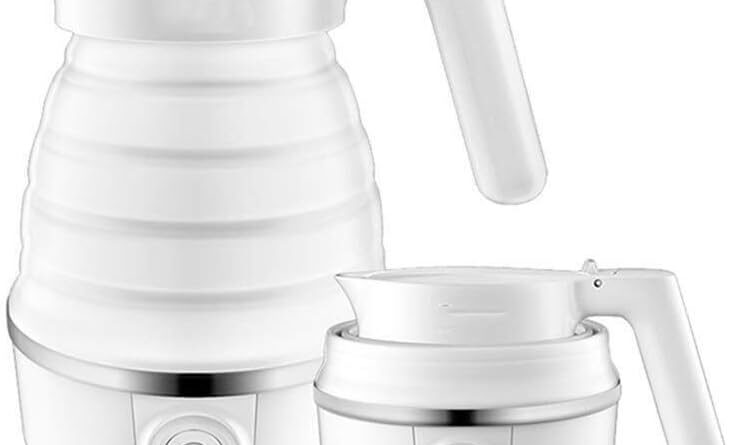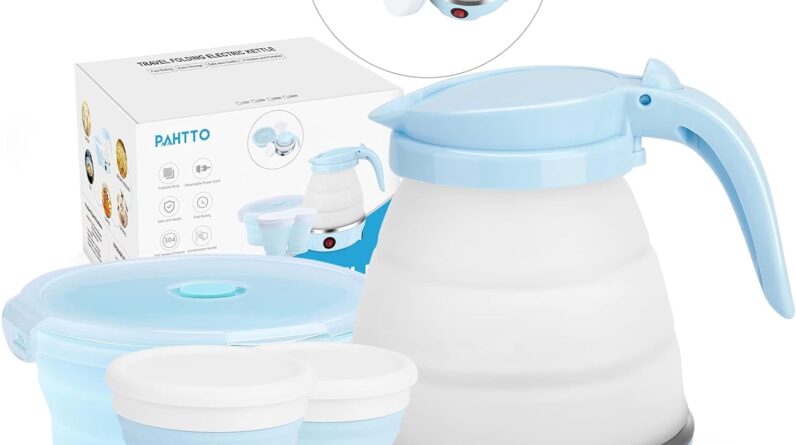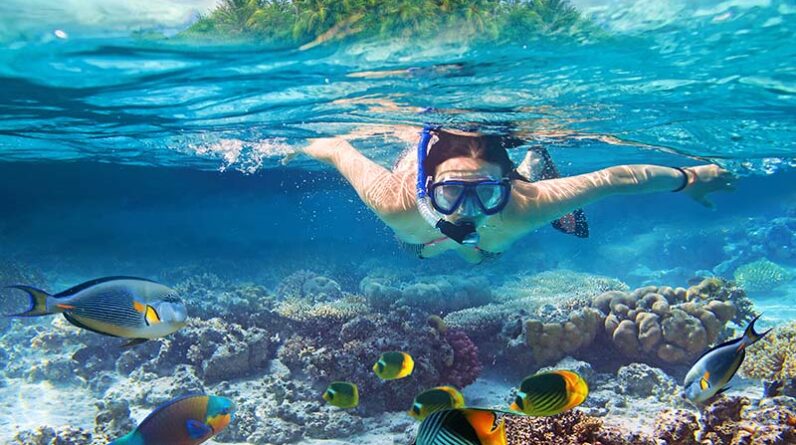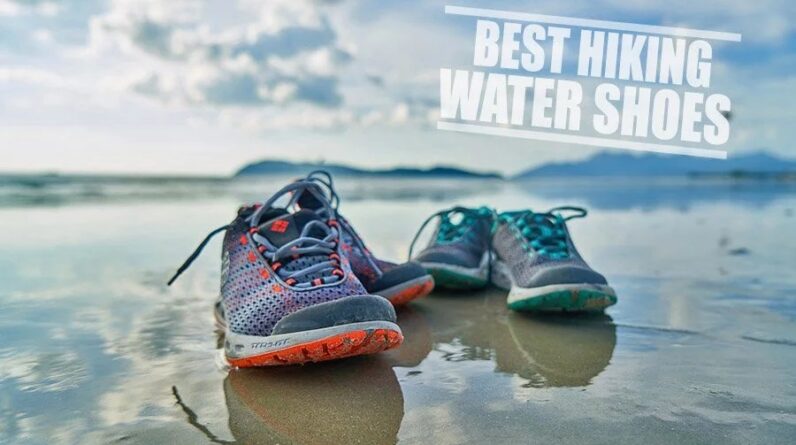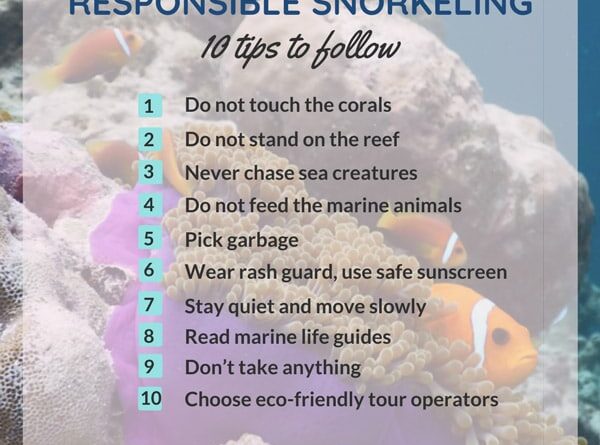
Ready to dive into the underwater world of marine life while snorkeling? In this article, we will explore the top safety guidelines that you need to keep in mind to ensure a delightful and safe snorkeling experience. Whether you are a beginner or an experienced snorkeler, these guidelines will equip you with the necessary knowledge and precautions to navigate the mesmerizing marine environment with confidence and peace of mind. So, get ready to embark on a thrilling journey beneath the waves and discover how to snorkel responsibly and respectfully with the enchanting creatures of the sea.
Selecting the Right Snorkeling Equipment
Choosing a Good Quality Mask
When it comes to snorkeling, selecting the right equipment is essential for an enjoyable and safe experience. One of the most important pieces of equipment is a good quality mask. A mask that fits well on your face ensures a comfortable fit, prevents leaks, and allows for clear vision underwater. Look for a mask that is made from high-quality materials and has a silicone skirt, which provides a better seal. Additionally, consider choosing a mask with tempered glass lenses, as they are more durable and less likely to fog up.
Selecting a Snorkel with a Purge Valve
Another important piece of snorkeling equipment is the snorkel itself. When choosing a snorkel, look for one that has a purge valve. A purge valve allows you to easily clear any water that enters the snorkel. This feature is especially important if you plan on diving below the surface, as it helps prevent water from entering your mouth. Additionally, consider choosing a snorkel with a splash guard to reduce the chances of water entering the snorkel from waves or splashes.
Finding Fins that Fit Well
Fins are another essential part of snorkeling equipment, as they help you move through the water with ease. When selecting fins, it’s crucial to find a pair that fit well and are comfortable to wear. Properly fitting fins should feel snug but not too tight, as they can cause discomfort or blisters. Additionally, consider the length and flexibility of the fins. Longer fins provide more propulsion, while shorter fins are more maneuverable. Choose fins that suit your swimming style and preferences.
Mastering Snorkeling Techniques
Breathing Techniques
Mastering proper breathing techniques is vital for a successful snorkeling experience. When using a snorkel, it’s important to breathe slowly and deeply through your mouth, rather than through your nose. Practice taking slow breaths and exhaling fully to ensure you maintain a steady flow of air. Remember not to hold your breath while snorkeling, as it can cause discomfort and even potentially damage your lungs. Focus on breathing in a relaxed and controlled manner to make the most of your time underwater.
Equalizing Ear Pressure
Equalizing ear pressure is another important technique to master when snorkeling. As you dive below the surface, the pressure in your ears increases, which can cause discomfort or even pain. To equalize the pressure, gently pinch your nose closed and lightly blow through it while swallowing. This technique helps equalize the pressure in your ears and prevents any discomfort. It’s important to equalize frequently, especially if you plan on diving to greater depths.
Proper Snorkel Use
Utilizing your snorkel correctly is crucial for a safe and enjoyable snorkeling experience. Ensure that the snorkel is securely attached to your mask and positioned correctly in your mouth, with the mouthpiece comfortably resting between your teeth. Keep the snorkel tube above the water at all times to prevent water from entering. Should water enter the snorkel, use the purge valve or perform a gentle exhalation to clear it. Properly using your snorkel allows for uninterrupted breathing and enhances your comfort underwater.
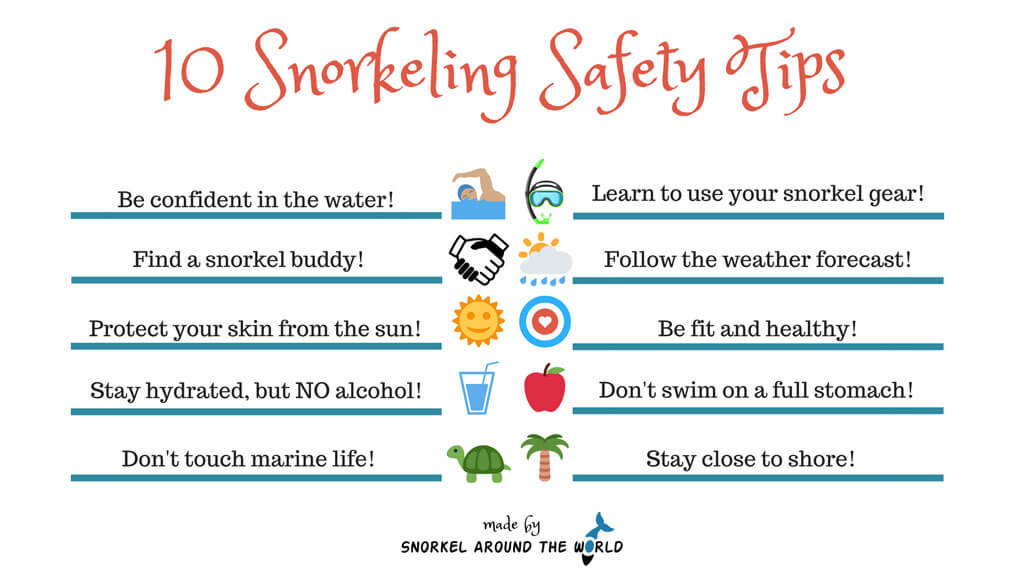
This image is property of snorkelaroundtheworld.com.
Understanding Marine Life Behavior
Respect Marine Life’s Space
When snorkeling with marine life, it’s important to remember that you are a guest in their underwater world. Always maintain a respectful distance from marine animals and avoid approaching them too closely. Give animals plenty of space to move freely and do not attempt to touch or chase them. By respecting their natural habitat and behavior, you contribute to their well-being and minimize the risk of disturbing or harming them.
Avoid Touching Marine Life
While it may be tempting to touch or interact with marine life, it’s crucial to refrain from doing so. Touching marine animals can disrupt their natural behavior and potentially harm them. Many marine animals have sensitive skin or protective coatings that can be easily damaged by human touch. Additionally, some species may have defensive mechanisms or toxins that can be harmful to humans if touched. Admire marine life from a respectful distance and observe their beauty without disturbing their habitat.
Beware of Defensive Marine Life
Some marine species, such as certain types of fish or cephalopods, have defensive behaviors that can pose a risk to snorkelers. It’s important to be aware of these behaviors and avoid provoking or approaching defensive marine life. If you encounter an aggressive or territorial animal, slowly back away and give it space. Never corner or threaten marine life, as it can result in dangerous situations for both you and the animal. Understanding the behavior of marine species in your snorkeling location is essential for your safety and the well-being of the animals.
Staying Aware of Environmental Factors and Personal Health
Check Weather Conditions
Before embarking on a snorkeling trip, it’s essential to check the weather conditions. Snorkeling in rough weather, strong winds, or during a storm can be dangerous. High waves or strong currents can make it difficult to swim or navigate underwater. Additionally, adverse weather conditions can impact visibility and limit the sights you can see while snorkeling. Always prioritize your safety and choose to snorkel on days with favorable weather conditions.
Assess Water Conditions
In addition to checking the weather, it’s important to assess the water conditions before snorkeling. Look for any warning signs or flags indicating dangerous conditions, such as strong currents or hazardous marine life in the area. If the water appears murky or unsafe, it’s best to postpone your snorkeling plans. Clear water with good visibility allows you to fully enjoy the underwater environment and observe marine life without compromising your safety.
Stay Hydrated and Use Sunscreen
When spending time in the sun and water, it’s crucial to stay hydrated and protect your skin. Snorkeling can be physically demanding, and adequate hydration is essential for your well-being. Carry a bottle of water with you and remember to drink regularly, especially in warmer climates. Additionally, always apply sunscreen before going snorkeling to protect your skin from the harmful effects of the sun’s rays. Choose a waterproof sunscreen with a high SPF and reapply it as necessary throughout your snorkeling adventure.
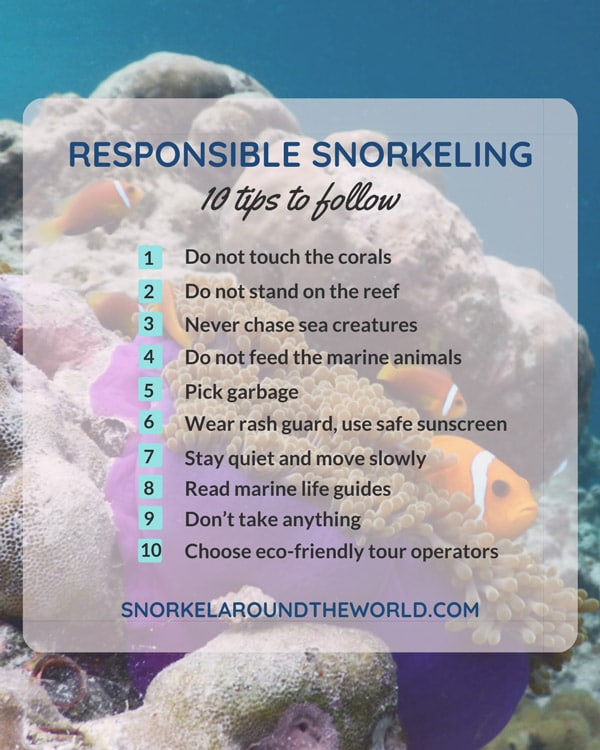
This image is property of snorkelaroundtheworld.com.
Snorkeling with a Buddy
Always Snorkel with a Partner
Snorkeling with a buddy is highly recommended for safety and enjoyment. Having a snorkeling partner provides an extra level of security, as you can look out for each other and assist in case of any difficulties. Snorkeling alone can be risky, especially if you encounter any unexpected situations, such as equipment malfunctions or fatigue. By snorkeling with a partner, you can share the experience and ensure that someone is always there to help if needed.
Establish Communication Signals
Effective communication is essential when snorkeling with a buddy. Before entering the water, establish a set of communication signals that you can use to communicate underwater. These signals can be simple hand gestures or predefined signals, such as tapping your head to indicate a problem with your mask or pointing to indicate an interesting marine life sighting. Clear and understood communication signals allow you and your buddy to stay connected and address any concerns or share exciting discoveries.
Practice Buddy Assistance Techniques
In addition to establishing communication signals, it’s important to practice buddy assistance techniques. Familiarize yourself with simple rescue techniques, such as towing or providing assistance to a tired or injured buddy. Having the knowledge and skills to assist your buddy in case of an emergency can potentially save lives. Participate in training sessions or workshops that provide hands-on experience in snorkeling rescue techniques to enhance your preparedness and confidence when snorkeling with a buddy.
Emergency Preparedness
Knowing CPR and First Aid
Accidents and emergencies can happen even when snorkeling with all the necessary precautions. Being prepared with knowledge of CPR (Cardiopulmonary Resuscitation) and first aid is crucial for any snorkeler. If someone experiences a medical emergency, such as cardiac arrest or drowning, performing CPR can significantly improve the chances of survival until professional medical help arrives. Additionally, knowing first aid techniques allows you to provide immediate assistance to injured individuals, reducing the severity of their injuries and promoting faster recovery.
Carrying a Safety Buoy or Flotation Device
Carrying a safety buoy or floatation device is an important safety measure when snorkeling. These devices provide additional buoyancy and visibility, making it easier for others, including rescue personnel, to locate you in the water. In case of exhaustion, cramps, or other emergencies, a safety buoy or floatation device allows you to rest and conserve energy while waiting for assistance. Consider investing in a brightly colored, inflatable safety buoy with a whistle attachment for added visibility and alerting others in case of distress.
Creating an Emergency Plan
Having an emergency plan in place before you start snorkeling is essential for your safety. Discuss the plan with your snorkeling buddy and ensure that you both understand and agree upon the procedures to follow in case of emergencies. This plan should include actions such as signaling for help, contacting emergency services if necessary, and providing assistance to each other. By having a well-defined and practiced emergency plan, you can respond more effectively to unexpected situations, minimizing risks and ensuring a more positive outcome.
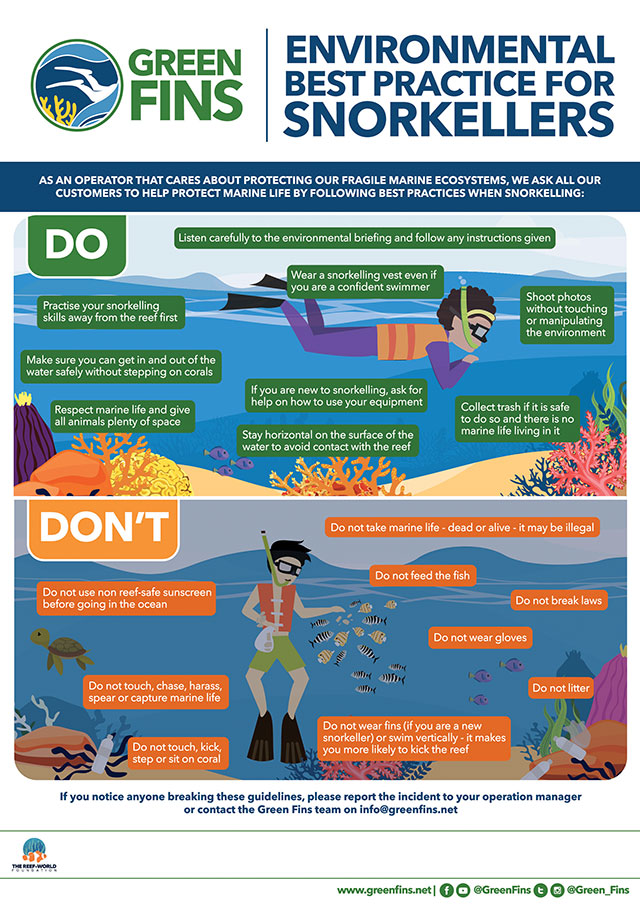
This image is property of news.scubatravel.co.uk.
Avoiding Dangerous Snorkeling Practices
Refrain from Snorkeling While Intoxicated
Snorkeling while intoxicated is not only dangerous but also illegal in many places. Alcohol impairs judgment and coordination, increasing the risk of accidents and injuries. Snorkeling requires focus, awareness, and physical abilities, which can be compromised under the influence of alcohol or drugs. Always prioritize your safety and avoid consuming alcohol before or during your snorkeling adventures.
Do Not Feed Marine Life
Feeding marine life may seem harmless or even exciting, but it can have severe consequences for the animals and the ecosystem. Feeding disrupts natural behaviors and can lead to dependency on human sources of food, which can have negative impacts on the health and survival of marine species. Additionally, feeding marine life can alter the balance of the ecosystem and encourage the overpopulation of certain species. Observe marine life in their natural habitat without interfering or feeding them, allowing them to maintain their natural behaviors and relationships.
Do Not Snorkel Beyond Your Capabilities
Snorkeling can be an enjoyable and rewarding activity, but it’s essential to know and respect your own capabilities. Snorkeling in conditions or locations that are beyond your skill level can be dangerous and put you at risk. Be honest with yourself about your swimming abilities and comfort level in the water. Start with calm, shallow waters and gradually progress to more challenging environments as you gain experience and confidence. Snorkeling within your capabilities ensures a safer and more enjoyable experience.
Respecting the Environment
Do Not Remove Marine Life or Corals
Refrain from removing marine life or corals when snorkeling. It’s essential to leave the underwater world as you found it, without disrupting the delicate balance of marine ecosystems. Removing marine life or corals from their natural habitat can cause irreversible damage and affect the overall health and diversity of the ecosystem. Appreciate the beauty of marine life without impacting their habitat and contribute to the preservation of natural environments for future generations.
Do Not Litter or Dispose of Waste Improperly
Responsible snorkeling involves the proper disposal of waste and a commitment to keeping the environment clean. Carry a waterproof bag or container to collect any trash or waste you generate while snorkeling, ensuring that it does not end up in the ocean. Dispose of your waste in designated bins or facilities on land and encourage others to do the same. By minimizing litter and waste, you help protect marine life and keep the underwater environment pristine for everyone to enjoy.
Choose Responsible Snorkeling Operators
When selecting a snorkeling operator or tour company, choose those that prioritize environmental conservation and responsible snorkeling practices. Responsible operators adhere to guidelines that protect marine life, minimize disturbances to the ecosystem, and prioritize safety for their guests. Research and select operators that follow sustainable practices, such as limiting the number of snorkelers per trip, educating participants on marine conservation, and supporting local efforts to safeguard marine environments. By choosing responsible operators, you contribute to the preservation of marine habitats and promote sustainable tourism.
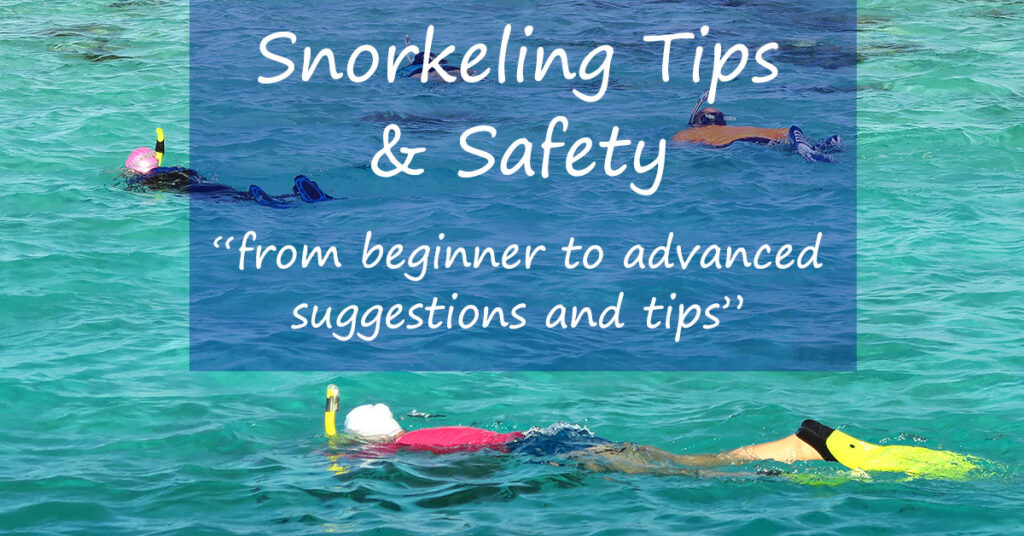
This image is property of www.tropicalsnorkeling.com.
Educating Yourself about Local Marine Life
Research Marine Life Species in the Area
Before snorkeling in a new location, take the time to research the local marine life species that you may encounter. Familiarize yourself with different fish, corals, and other marine organisms that inhabit the area. Understanding the diversity of marine life in the location enhances your overall snorkeling experience and allows you to appreciate and identify the species you come across. Books, online resources, and local marine biology centers or museums can provide valuable information on the marine life in your snorkeling destination.
Learn About Their Behavior and Habits
In addition to researching the species, understanding the behavior and habits of marine life is important for a safe and respectful snorkeling experience. Learn about the feeding patterns, territorial behaviors, and mating habits of different species. This knowledge can help you predict and avoid potential risks or disturbances to marine life while snorkeling. By observing marine life from a distance and without interfering, you can witness their natural behaviors and better appreciate the complexity of their underwater world.
Understand Conservation Efforts
Educating yourself about local conservation efforts is an excellent way to contribute to the welfare of marine life. Local conservation organizations and marine research institutes often conduct research, awareness campaigns, and community outreach programs to protect marine ecosystems. By supporting these efforts, you contribute to the conservation and preservation of marine life and their habitats. Stay informed about ongoing conservation initiatives, participate in beach clean-ups and conservation events, and share the knowledge you gain with friends and fellow snorkelers.
Seeking Professional Guidance and Training
Take Snorkeling Lessons or Courses
For those new to snorkeling or seeking to enhance their skills, taking snorkeling lessons or courses is highly beneficial. Professional instructors can teach you proper techniques, safety protocols, and essential skills for a successful snorkeling experience. They can guide you in selecting the right equipment and help you gain confidence in the water. Snorkeling lessons provide valuable knowledge and hands-on practice to ensure a safe and enjoyable experience in any snorkeling environment.
Hire Local Snorkeling Guides
When snorkeling in unfamiliar locations or environments, consider hiring local snorkeling guides. Local guides possess extensive knowledge of the area’s marine life, conditions, and safety regulations. They can provide insights into the best snorkeling spots, point out interesting marine life sightings, and ensure your safety throughout the excursion. Snorkeling guides offer a wealth of information and expertise, allowing you to fully immerse yourself in the marine world and make the most of your snorkeling adventure.
Follow the Guidance of Professionals
Whether you’re a beginner or an experienced snorkeler, it’s important to follow the guidance of professionals when snorkeling. Listen to the instructions provided by instructors, guides, and experienced snorkelers. They can offer valuable advice, safety tips, and help you navigate unfamiliar environments. By heeding their guidance, you can avoid potential risks, enhance your skills, and gain a deeper appreciation for the beauty and fragility of marine life.
In conclusion, snorkeling with marine life offers a unique opportunity to explore the wonders of the underwater world. By following these safety guidelines, respecting marine life and their habitat, and staying informed about conservation efforts, you can enjoy a safe and memorable snorkeling experience while contributing to the preservation of our delicate marine ecosystems. Remember to choose the right equipment, master essential techniques, stay aware of environmental factors and personal health, snorkel with a buddy, be prepared for emergencies, avoid dangerous practices, respect the environment, educate yourself about local marine life, and seek professional guidance when needed. Happy snorkeling!
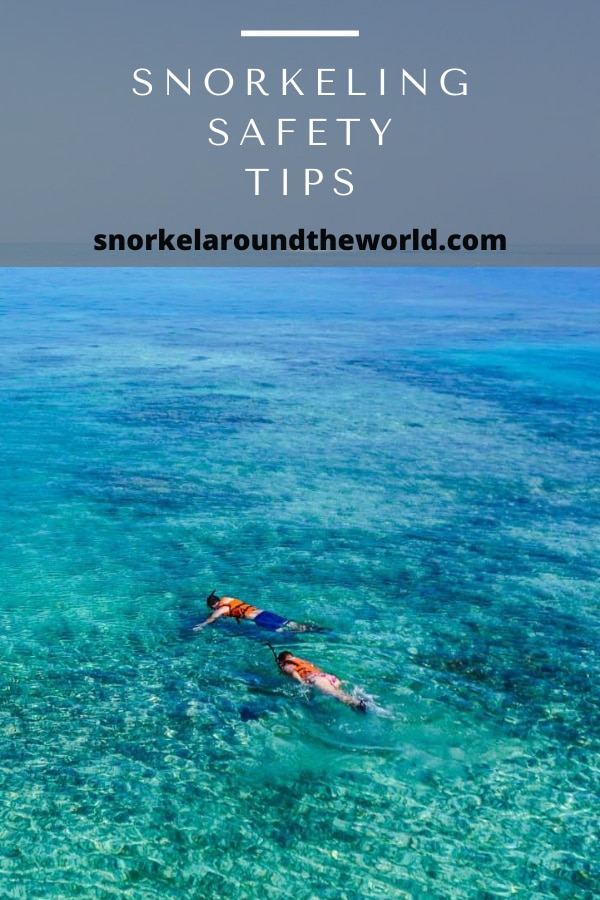
This image is property of snorkelaroundtheworld.com.


